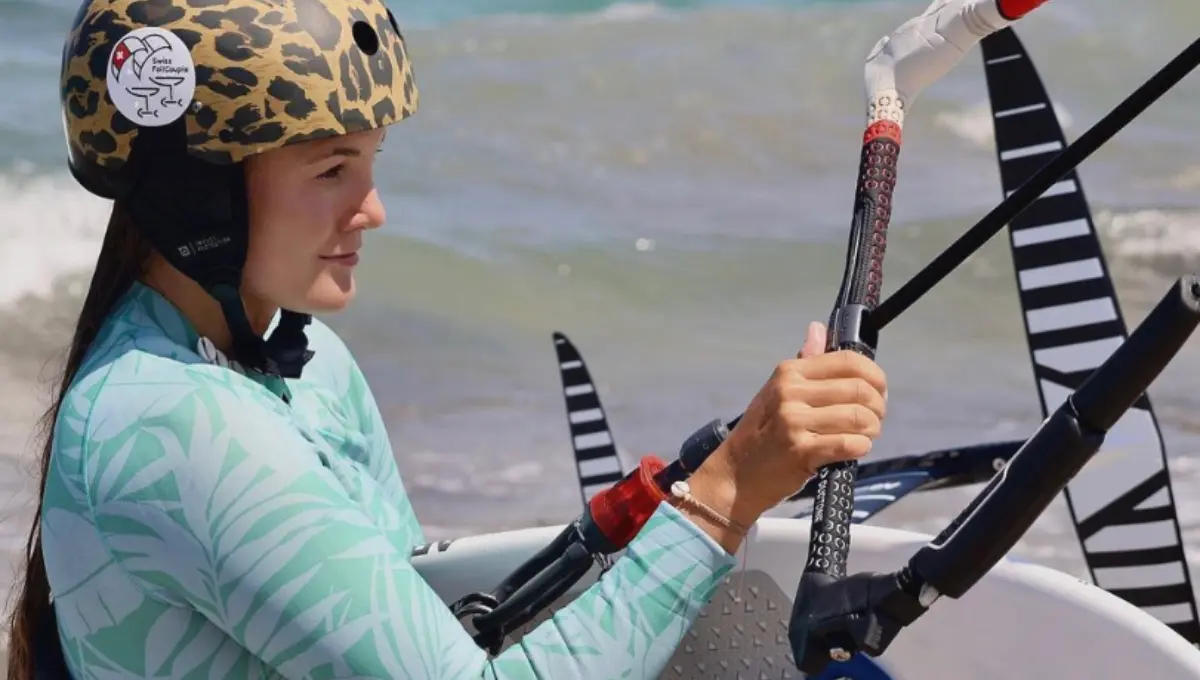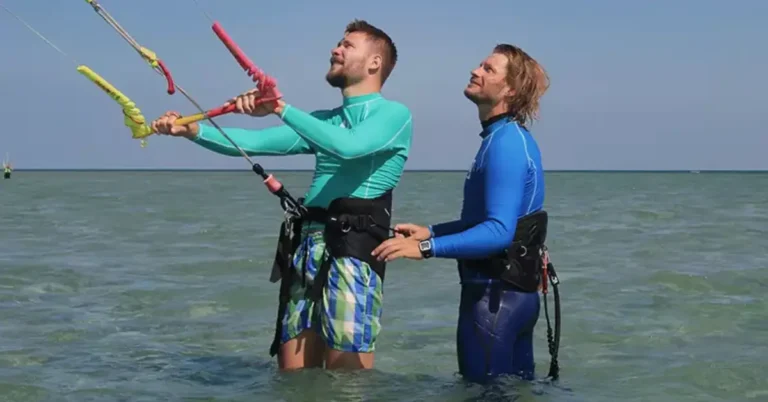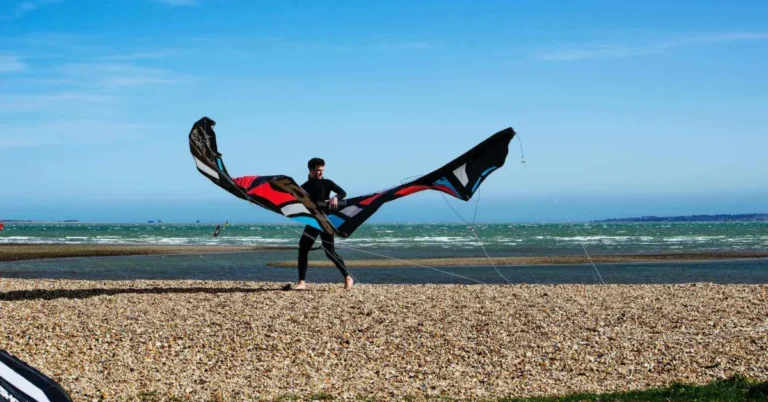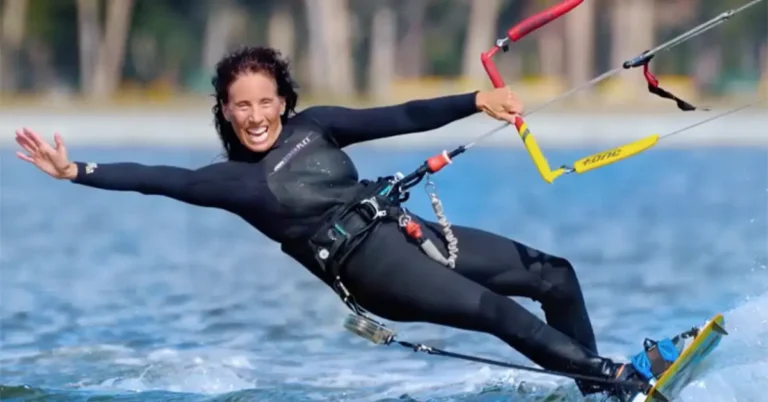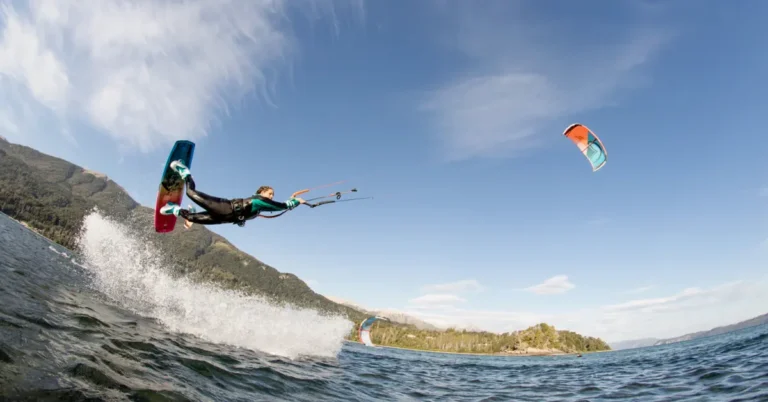What Is Easier Windsurfing Or Kitesurfing?
While windsurfing and kitesurfing share similarities, they each offer distinct experiences on the water. Windsurfing, utilizing a sail attached to a board, provides a more straightforward learning curve, making it appealing to beginners.
In contrast, kitesurfing involves harnessing the power of a kite to propel oneself across the waves, offering a more dynamic and exhilarating ride. While windsurfing may be preferable for novices, experienced sailors may find the challenges and thrills of kitesurfing irresistible.
Both sports, categorized under extreme sports due to the potential for powerful winds to lift participants into the air, offer unique opportunities for adventure and skill development on the water.
Also Read: Best Kitesurfing Kites For Beginners
Should I Take Up Windsurfing Or Kiteboarding? Windsurfing Versus Kitesurfing
Both windsurfing and kiteboarding are popular water sports that utilize the wind’s power to propel participants across the water. These activities appeal to people of all ages and skill levels, making them versatile and accessible options for recreation. However, choosing between windsurfing and kiteboarding depends on various factors, including personal preferences and skill levels.
Windsurfing, a sport with over 50 years of history, offers a challenging and physically demanding experience. It requires good balance, coordination, and strength, making it ideal for those seeking an intense workout on the water. With windsurfing, enthusiasts can enjoy the thrill of riding the waves while harnessing the wind’s energy, creating an exhilarating adventure.
On the other hand, kiteboarding, a relatively newer sport, provides a more relaxed and laid-back experience compared to windsurfing. It is often considered more beginner-friendly, offering an easier learning curve for newcomers. Kiteboarding allows participants to glide effortlessly across the water, enjoying the sensation of being propelled by the wind while taking in the scenic views.
Ultimately, the choice between windsurfing and kiteboarding boils down to individual preferences and desired experiences on the water. Whether you crave the challenge and intensity of windsurfing or prefer the ease and relaxation of kiteboarding, both sports offer unique opportunities for enjoyment and adventure on the open water.
What’s Better For Safety In The Case Of Windsurfing OR Kiteboarding?
When weighing the options between windsurfing and kitesurfing, several factors come into play. The primary distinction lies in their reliance on different components: windsurfing utilizes the wind’s force directly through a sail, while kitesurfing relies on controlling a kite.
Kitesurfing, being a newer sport, offers a dynamic experience with evolving equipment that can cater to various preferences and skill levels. It holds the potential for versatility and exhilaration with the right gear, making it an attractive choice for those seeking an extreme water sport.
Conversely, windsurfing boasts a longer history and more established equipment, which tends to be more dependable and less prone to frequent changes. Its stability, particularly for beginners, is a notable advantage.
The seated position on the board reduces the likelihood of tipping over compared to the upright stance required in kitesurfing. Additionally, the larger sail catches wind more gradually, affording greater reaction time and reducing the risk of injury in case of mishaps.
Windsurf vs Kitesurf vs Wing Foil
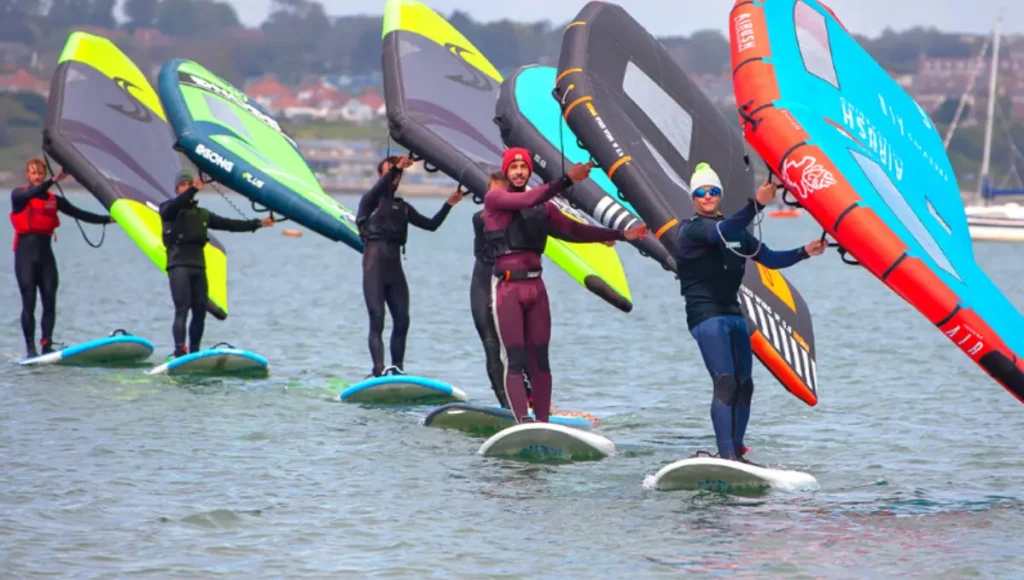
Windsurfing
Kitesurfing
Wing Foiling
Can you kiteboard on a lake?
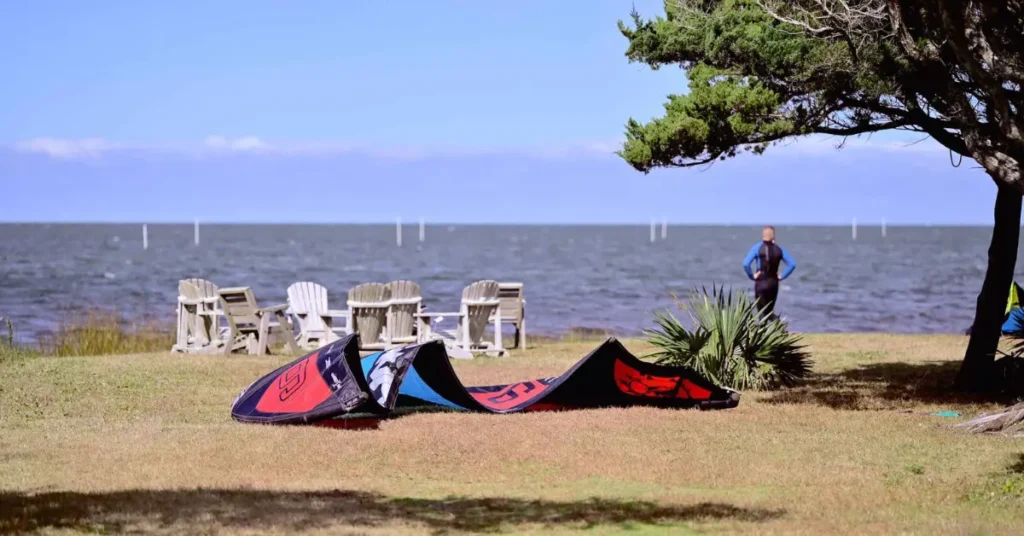
It is possible to kiteboard on a lake, provided that certain conditions are met. Kiteboarding on a lake requires sufficient open space, consistent wind, and appropriate weather conditions. Lakes with expansive surfaces and consistent wind patterns are ideal for kiteboarding. Additionally, it’s essential to be mindful of any obstacles or hazards in the water, such as rocks, shallow areas, or other watercraft.
Safety precautions should always be observed, including wearing appropriate safety gear, understanding kiteboarding techniques, and being aware of local regulations or restrictions. Kiteboarding on a lake can offer a unique and enjoyable experience, allowing enthusiasts to harness the wind’s power and glide across the water’s surface in a serene, natural environment.
Is windsurfing easier than kitesurfing?
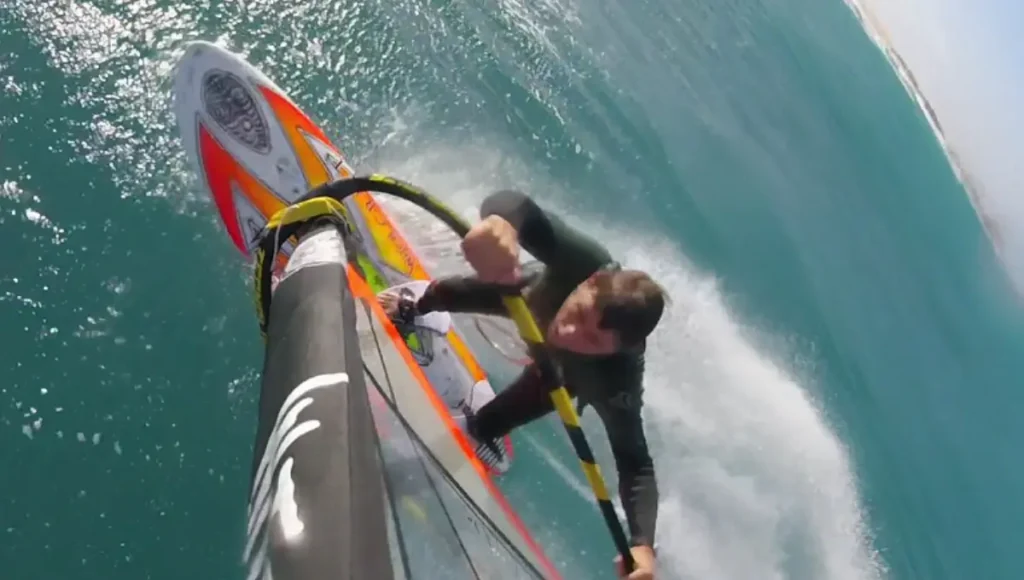
Determining whether windsurfing is easier than kitesurfing is subjective and depends on various factors, including individual preferences, physical abilities, and learning styles.
Overall, while windsurfing may be perceived as more challenging to learn initially, it offers greater versatility and control in varying conditions. Kitesurfing, on the other hand, may have a quicker learning curve but could be more dependent on specific wind conditions and may require additional safety considerations due to the kite’s power. Ultimately, the ease of learning and enjoyment of either sport will depend on individual preferences and experiences.
Which one should I learn: Kitesurfing or windsurfing?
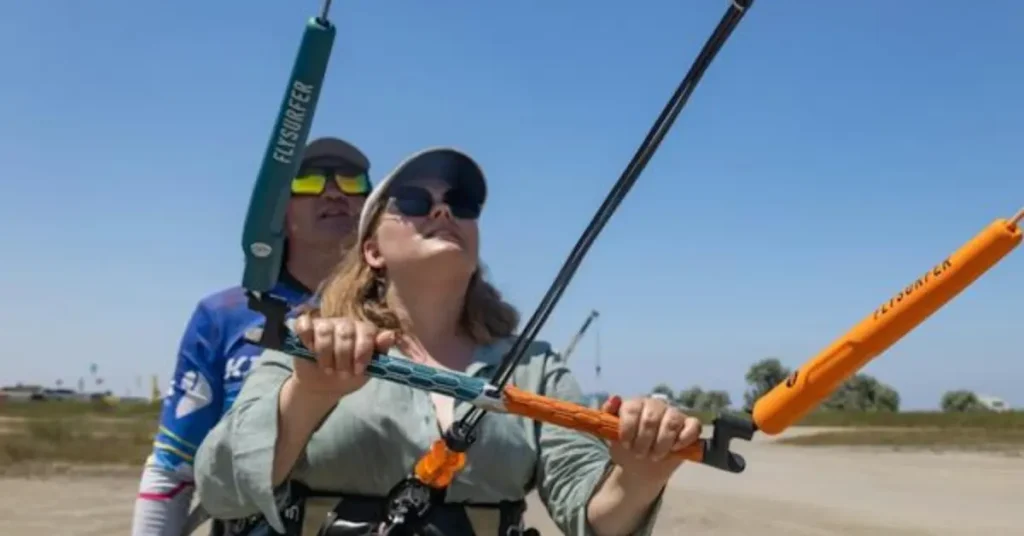
Deciding whether to learn kitesurfing or windsurfing depends on various factors, including your preferences, physical abilities, local conditions, and long-term goals.
Long-Term Goals: Consider your long-term goals and aspirations within the sport. Windsurfing offers more versatility and opportunities for progression, including freestyle tricks, wave riding, and racing. Kitesurfing also provides various disciplines, such as freestyle, wave riding, and foiling, which may align better with your interests.
Frequently Asked Questions
Conclusion
Determining whether windsurfing or kitesurfing is easier isn’t a straightforward task, as it varies depending on individual skill levels and preferences. Windsurfing typically requires more time to master due to learning to manipulate the sail and control the board. However, it offers greater versatility across a wider range of wind conditions, making it suitable for various experiences.
Conversely, kitesurfing tends to have a slightly easier learning curve compared to windsurfing. Nonetheless, it is more restrictive in terms of wind conditions, limiting its potential enjoyment to specific environments. Thus, while it may be easier to grasp initially, it offers fewer options for diverse experiences.
